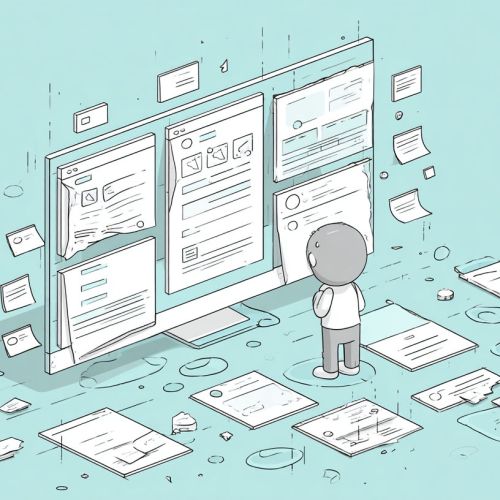In today’s fiercely competitive digital landscape, marketing leaders must leverage every advantage to create content that resonates, engages, and converts. AI content optimization is reshaping how organizations develop and refine their content strategies by harnessing powerful, data-driven intelligence rather than intuition alone. From audience behavior analysis with AI to AI-driven content gap analysis, predictive performance analytics, and personalized messaging with AI, the possibilities for enhancing content impact are vast and compelling.
For mid- and senior-level marketing executives, understanding and integrating AI-powered insights into the content lifecycle is no longer optional — it’s essential. This comprehensive guide explores how AI content optimization drives smarter decisions and better outcomes, illustrated with actionable strategies and tech insights to future-proof your content marketing efforts.
What is AI Content Optimization?
AI content optimization refers to leveraging artificial intelligence technologies—such as natural language processing (NLP), machine learning, and data analytics—to refine and enhance digital content in ways that improve visibility, engagement, and conversion rates. Unlike manual optimization that relies on experience and traditional SEO tactics, AI content optimization analyzes large volumes of data to generate actionable insights on what works and why.
- Automates keyword research and topic discovery
- Analyzes audience intent and behavior patterns
- Evaluates competitor content performance
- Personalizes messaging based on user profiles
- Predicts which content will perform best
This approach not only saves time but enables marketing teams to make smarter, evidence-based decisions throughout the content creation and distribution process.
Leveraging AI-Driven Content Gap Analysis
One powerful capability within AI content optimization is AI-driven content gap analysis. This technique scans your existing content portfolio, competitor outputs, and trending search queries to identify unmet topics or suboptimal formats.
How Content Gap Analysis Enhances Strategy
Finding gaps ensures your content fills unique needs in your audience’s journey, positioning your brand as a thought leader. AI tools analyze:
- Keyword opportunities your competitors capitalize on
- Emerging trends relevant to your niche
- Underperforming content themes in your catalog
By closing these gaps, marketers can unlock new organic traffic streams and fuel higher engagement rates without guesswork.
For a practical example of tools in this space, consider platforms like Clearscope or MarketMuse, which systematically deliver gap reports and optimization suggestions.
Audience Behavior Analysis with AI: Understanding Your Users Better
Modern content success hinges on deep insights into audience preferences and digital behaviors. AI-powered analytics platforms use machine learning to profile segmented audience groups, analyze browsing paths, content interactions, and purchasing signals for granular understanding.
- Track engagement metrics at scale and in real-time
- Identify which topics sustain attention or prompt conversions
- Understand cross-channel content consumption patterns
Integrating audience behavior analysis with AI allows marketing leaders to adapt messaging and creative assets dynamically, catering to evolving user expectations and improving customer experience.
Predictive Content Performance: Forecasting What Works
One of the most transformative applications of AI content optimization is predictive content performance. By learning from historical content data, AI models forecast potential engagement, traffic, and conversion outcomes before content is even published.
- Optimizes editorial calendars based on predicted trends
- Guides investment toward high-return content types
- Reduces risk of costly content flops with data-backed decisions
Beyond guesswork, predictive analytics enable marketers to prioritize efforts efficiently and maximize ROI. For example, AI can highlight whether a long-form article will outperform short blogs or which video topics resonate most with a target demographic.
Utilizing AI Engagement Metrics to Refine Content
AI doesn’t just help plan content—it continuously measures and refines it post-publication. AI engagement metrics go beyond basic likes or shares by evaluating time on page, scroll depth, sentiment analysis on comments, and social amplification patterns.
- Real-time alerts on content’s resonance or decline
- Identification of specific content elements driving interaction
- Adaptive strategies based on consumer sentiment shifts
Leveraging these nuanced metrics allows teams to optimize existing content, reallocate budgets toward high-performing assets, and retire underperforming pieces that dilute brand authority.
Personalized Messaging with AI: Tailoring Content at Scale
Personalization remains a holy grail in digital marketing, and AI makes it achievable even at large scale. Personalized messaging with AI dynamically modifies copy, product recommendations, and call-to-actions based on individual customer data—location, browsing history, purchase intent, and more.
- Delivers highly relevant content experiences per user segment
- Boosts conversion rates by matching content to intent
- Increases customer lifetime value through tailored journeys
Tools like HubSpot’s AI-driven smart content or Adobe Target exemplify this trend, providing marketers the ability to customize content workflows in real-time without complex manual segmentation.
Integrating AI Content Optimization into Your Marketing Strategy
Implementing AI-powered insights for content optimization requires alignment across teams, clear objectives, and the right technology stack. Here’s a roadmap to get started:
- Assess Current Content Performance: Use AI analytics to benchmark your content assets.
- Identify Priority Use Cases: Pinpoint whether gap analysis, audience insights, personalization, or predictive models will move the needle fastest.
- Select Robust AI Platforms: Choose scalable tools that fit existing workflows.
- Train Teams: Ensure marketers and analysts understand AI interpretations and best practices.
- Continuously Monitor & Optimize: Set KPIs and use AI engagement metrics for ongoing refinement.
Conclusion: Five Key Takeaways on AI Content Optimization
- AI content optimization revolutionizes content strategy by using data to inform every stage, from ideation to performance tuning.
- AI-driven content gap analysis uncovers new opportunities and helps fill unmet audience needs effectively.
- Audience behavior analysis with AI provides detailed insights that enable brands to tailor and personalize messaging with precision.
- Predictive content performance helps forecast success and streamline resource allocation, mitigating content risks.
- Leveraging AI engagement metrics ensures continuous content improvement for sustained digital relevance.
The AI content optimization journey is not just about technology but a mindset shift toward smarter, more agile marketing. To gain a competitive edge and unlock content’s full potential, start integrating AI-powered insights into your content ecosystem today.
Ready to elevate your content strategy with AI? Request a consultation with me to kickstart your transformation.






